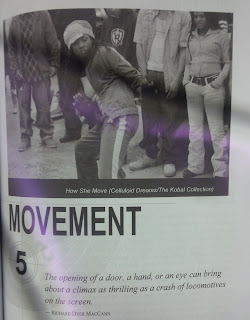Some Important Scenes
Two frames in the cinematic frame remind us that we are watching a movie. Self reflexive movies keep us aware, or remind us, that we are watching a movie, and that they are CONSTRUCTIONS (MOVIES).
Here is another shot when Luisa looks at the camera, reminding us that we are watching a movie. Direct Look at the camera is one of the features of THE CINEMA OF ATTRACTIONS. You can find some of the Tom Gunning's description of THE CINEMA OF ATTRACTIONS in Understanding Movies pp. 378-379.
Here are some famous shots from The Great Train Robbery (USA dir. Edwin S. Porter, 1903). These shots have become symbols of THE CINEMA OF ATTRACTIONS, where the villain looks and shoots at the camera, reminding, and making us aware, that WE ARE WATCHING A MOVIE, A CONSTRUCTION!
Here is another shot where the man talks about Compos the goalie. This reference/allusion to the world outside the movie is another feature of self reflexive movies.
Disruptions in sound that follows by narrator's voice is another feature of self reflexive movies. In some self reflexive movies sound track and shots are not synced.

































